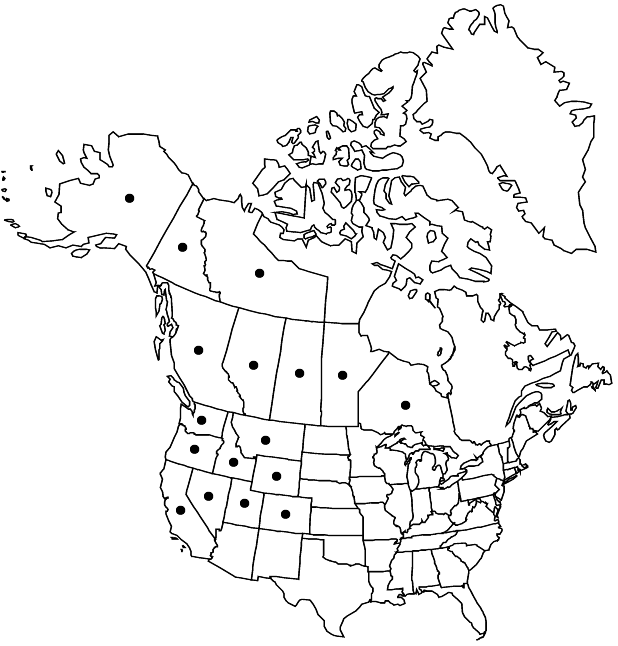Kalmia microphylla
Bull. Torrey Bot. Club 25: 581. 1898 ,.
Shrubs spreading to erect, 0.05–0.8 m. Twigs terete or slightly 2-angled proximal to node, viscid, glabrous or sparsely hairy. Leaves opposite; petiole absent or 0.1–2 mm, glabrous or puberulent; blade ovate or oval to broadly elliptic or lanceolate, 1.5–4 × 0.3–1.2(–1.8) cm, margins plane to slightly revolute, apex obtuse to acute, abaxial surface puberulent, adaxial glabrous or sparsely puberulent towards base, midribs of both surfaces without purple, stipitate trichomes. Pedicels 10–30 mm. Inflorescences solitary flowers or terminal, corymbiform racemes, (3–)6–12-flowered. Flowers: sepals light pink, pink, or light green, ovate, 2.7–3.6 mm, apex obtuse, surfaces glabrous, margins ciliate; petals connate ca. 1/2 their lengths, usually rose-purple, rarely white, 7–9 × 8–20 mm, glabrous, puberulent near base abaxially; filaments 3–4.5 mm; style 4.5–7 mm. Capsules 5-locular, 3.5–6 × 4–7 mm, glabrous. Seeds winged, oblong, 0.5–1.4 mm. 2n = 24.
Distribution

Alta., B.C., Man., N.W.T., Ont., Sask., Yukon, Alaska, Calif., Colo., Idaho, Mont., Nev., Oreg., Utah, Wash., Wyo.
Discussion
Varieties 2 (2 in the flora).
Kalmia microphylla is highly variable and has been treated as two species (J. K. Small 1914), two subspecies (R. L. Taylor and B. MacBryde 1978), or two varieties (J. E. Ebinger 1974). A flavonoid study (S. Liu 1993) indicated that the Pacific lowland (from Washington to Alaska) var. occidentalis populations are hardly separable from the alpine var. microphylla populations. The flavonoid data cited in support of combining K. microphylla and K. occidentalis are unpublished and impossible to judge. In any case, one would not expect varieties to necessarily differ chemically; the morphological and ecological differences seem sufficient.
The two varieties of Kalmia microphylla are generally distinct; var. microphylla is common in alpine meadows of western North America from California through the Rocky Mountains into northern Canada and Alaska. The elevations at which it is found range from an average 2500 meters (1500–3500 m) in California to an average 1700 meters (900–2200 m) in Alberta, British Columbia, and Washington. Variety occidentalis, in contrast, is always encountered growing below 900 meters, being common in coastal areas and islands off the coast of Alaska and British Columbia. These two varieties are known to hybridize (J. E. Ebinger 1974), and the hybrids are highly fertile and set large quantities of viable seed (R. A. Jaynes 1988).
Selected References
None.
Key
| 1 | Leaf blades ovate or oval to broadly elliptic, 1.5 (-2.5) cm, to 2.5 times as long as wide; calyces 5-7 mm diam. | Kalmia microphylla var. microphylla |
| 1 | Leaf blades lanceolate, 2-4 cm, 2.5-4 times as long as wide; calyces 7-10 mm diam. | Kalmia microphylla var. occidentalis |